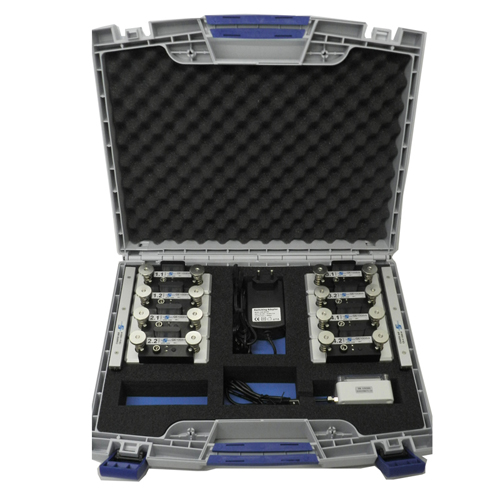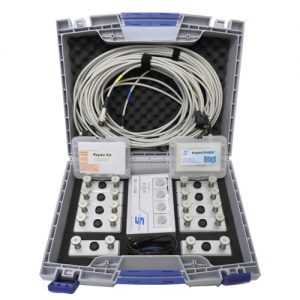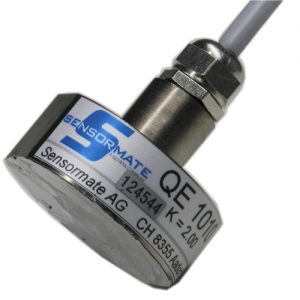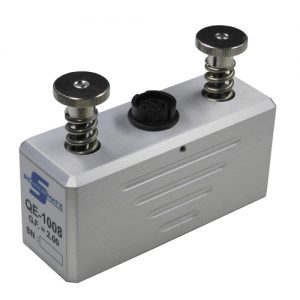Description
TECHNICAL DATA SENSOR
| Strain gauge type | Foil (GF = 2.0) |
| Bridge resistance | 350Ω |
| Measuring range | ± 800με |
| Output signal for radio transmission | IEEE 802.15.4TM |
| Signal range | Up to 100m (depending to operating area) |
| Sensitivity tolerance | ± 0.2% |
| Transverse sensitivity | 0.9 ± 0.2 % |
| Accuracy | < ± 0.5% FS |
| Linearity | < ± 0.5% FS |
| Hysteresis | < ± 0.5% FS |
| Repeatability | < 0.2% FS |
| Operating power consumption | 2x 1.2VDC (2x AAA rechargeable battery) |
| Charger power consumption | 100…230VAC |
| Ambient temperature | 5…65°C |
| Storage temperature | 0…65°C |
| Overload capability | unlimited |
| Type of protection | IP40 |
| Material: Housing | Aluminium |
| Material: Cover | Plastic |
| Weight | 530g |
| QE1008-W-USB-G | QE Booster | |
| Max. pairable sensors | 8 | 8 |
| Power supply | External via USB (5.0 VDC-500 mA) | Stand alone with integrated litium battery |
| Connector type | USB-A male | USB-C female |
| Battery type | – | LiPo 3.7V 340 mAh |
| Battery life | – | 12 h |
| Charging time | – | ~ 2 h |
| Charging requirements | – | USB (5.0 VDC-500 mA) |
| Protection class | IP40 | IP40 |
| Case material | Plastic | Plastic + holding magnets |
| Weight | 100g | 50g |
TECHNICAL DATA TRANSMISSION
| QE1008-W-USB-G | QE Booster | |
| Frequency | 2.4000-2.4835 GHz (ISM-Band) | 2.4000-2.4835 GHz (ISM-Band) |
| Protocol sensor to transceiver | IEEE 802.15.4TM | IEEE 802.15.4TM |
| Protocol transceiver to end device | USB 2.0 | Bluetooth 5 (low energy) |
|
End device compatibility | Sensormate App: – Windows 10
Inspectmate Software: – Windows XP/7/8/10 | Sensormate App: – Windows 10 – Android 6.0 or newer – IOS 8.0 or newer |
| TX-power | 0dBm / 1 mW (max.) | 0dBm / 1 mW (max.) |
| Range | For IEEE 802.15.4TM theoretical up to 100m (Typ. 30 m) | “For IEEE 802.15.4TM theoretical up to 100m (Typ. 30 m) For Bluetooth 5 theoretical up to 300m (Typ. 30 m) “ |
| „The transmission module is FCC (USA), IC (Canada), ETSI (Europe) and TELEC (Japan) certified. The MAC address is always unique and burnt into the hardware.“ | ||













Reviews
There are no reviews yet.